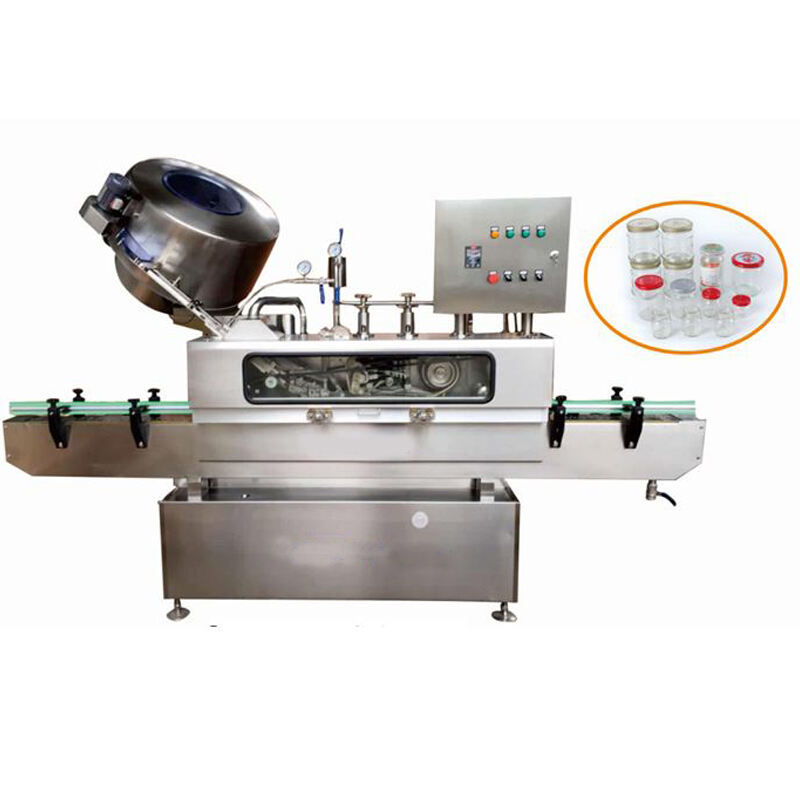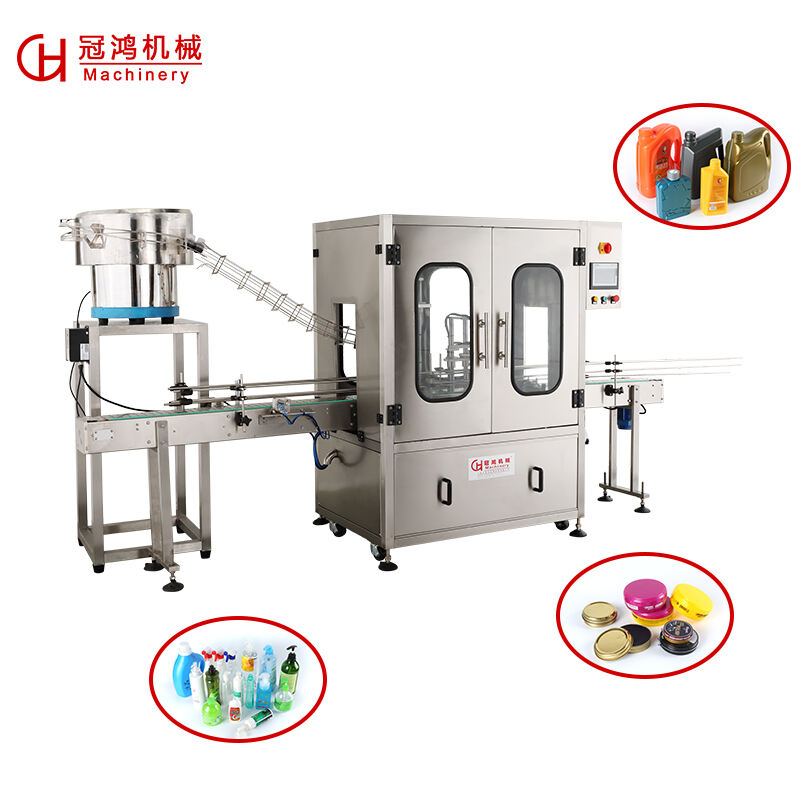Understanding the Role of a Capping Machine in Packaging Systems
Essential Equipment for Efficient Production Lines
A capping machine is a critical component in modern packaging systems, playing a central role in sealing bottles, jars, and containers securely. Businesses that rely on high-volume packaging need a capping machine to ensure fast, consistent, and leak-proof sealing. Whether it's used in the food, beverage, pharmaceutical, or cosmetics industry, the right capping machine improves efficiency, reduces waste, and maintains the integrity of the product. By automating the cap application process, manufacturers can meet high-output demands without sacrificing precision. This leads to better overall productivity, fewer operational delays, and higher customer satisfaction.
Why Choosing the Right Capping Machine Matters
Selecting the right capping machine goes beyond basic functionality. It requires a thorough understanding of production needs, container types, and material compatibility. An ill-suited machine can lead to misaligned caps, leaks, or even product recalls. Investing in a high-quality capping machine ensures longevity, reliable performance, and the ability to scale operations over time. Manufacturers who prioritize precision and efficiency find that a properly chosen machine minimizes maintenance downtime and aligns with regulatory requirements, especially in tightly controlled sectors. Therefore, identifying the ideal model tailored to specific operational workflows is vital for long-term success.
Key Features That Define a High-Quality Capping Machine
Consistent Torque Control and Tightening Precision
One of the fundamental characteristics of a reliable capping machine is its ability to apply consistent torque to each cap. This prevents under-tightening, which can lead to leakage, or over-tightening, which may damage containers. A high-quality capping machine typically includes adjustable torque settings or servo-driven motors for enhanced precision. Consistent torque ensures that every cap meets industry safety and quality standards, regardless of production volume. In applications where tamper evidence and product safety are essential, such as pharmaceuticals or beverages, this level of precision is indispensable. Reliable tightening mechanisms also reduce the need for rework, improving overall production line efficiency.
Compatibility with Multiple Cap and Container Types
Flexibility in handling different cap styles and container shapes is another important factor when evaluating a capping machine. The best systems can adapt to screw caps, snap-on caps, pump dispensers, and even child-resistant closures without requiring major modifications. Advanced capping machines come with interchangeable parts or fully automated changeovers, saving valuable time during product line shifts. This versatility is especially important for manufacturers with diverse product lines or seasonal changes. By choosing a flexible system, businesses can accommodate growth or product evolution without the need for multiple dedicated machines. This adaptability ultimately enhances operational agility and cost-effectiveness.

Advanced Technologies in Modern Capping Machines
Integration with Automated Systems
Modern manufacturing facilities often depend on full automation, making integration capability a critical factor for capping machines. High-end models are designed to work seamlessly with conveyors, filling lines, labelers, and inspection systems. This synchronization enables smooth operation and accurate throughput tracking. Smart capping machines may also include sensors and data interfaces to monitor torque, cap placement, and error rates in real time. These features allow operators to make quick adjustments, reducing waste and downtime. Furthermore, integration supports traceability and data analysis, which are becoming increasingly important in regulatory and quality-controlled environments.
Use of Servo Motors and Digital Control
Servo-driven capping machines offer greater accuracy and repeatability compared to pneumatic or mechanical models. These machines use digital control systems to precisely apply force, monitor performance, and adjust settings as needed. Operators can save configurations for different products, reducing human error and setup time. Servo motors also enhance safety by providing smoother motion and automated error handling. Additionally, digital controls make maintenance easier by alerting technicians to issues before they lead to breakdowns. This level of automation is ideal for facilities that prioritize consistent quality, efficiency, and ease of use.
Evaluating Durability and Maintenance Requirements
Construction Materials and Component Quality
The durability of a capping machine is closely tied to the quality of its construction materials. Stainless steel frames and corrosion-resistant components are standard in high-quality machines, especially for industries with strict hygiene requirements. Robust construction ensures that the machine can withstand continuous operation and exposure to cleaning agents without degrading. In addition to the frame, premium machines use industrial-grade motors, gearboxes, and actuators that offer longer service life. Choosing a capping machine built with durability in mind helps minimize long-term costs and ensures operational reliability, even in demanding environments.
Ease of Maintenance and Accessibility
Routine maintenance is essential for any capping machine, but the best models are designed with accessibility in mind. Features like tool-free disassembly, modular components, and clear labeling make it easier for operators to conduct inspections and part replacements. Maintenance alerts, diagnostic displays, and quick-change mechanisms further reduce downtime and service costs. Some advanced machines even offer remote diagnostics and support, enabling technicians to troubleshoot problems without being physically present. The ease of maintenance contributes directly to machine uptime, employee safety, and long-term performance. A well-maintained machine continues to deliver reliable results for years, maximizing return on investment.
Cost Considerations and Long-Term Value
Understanding the Total Cost of Ownership
When evaluating a capping machine, initial price is only part of the equation. Buyers must consider the total cost of ownership, including maintenance, downtime, consumables, and power consumption. A cheaper machine may result in higher expenses over time due to frequent repairs or poor energy efficiency. In contrast, a high-quality capping machine may command a higher upfront cost but offers lower long-term expenses. Calculating ROI involves analyzing throughput, labor reduction, and the lifespan of critical components. Manufacturers that take a comprehensive view of cost find better alignment with business goals and improved financial outcomes.
Training, Support, and Vendor Reliability
A great capping machine is only as good as the support behind it. Leading manufacturers provide comprehensive training for operators and technicians, ensuring that the machine is used efficiently and safely. Post-sale support, such as spare parts availability, software updates, and technical assistance, enhances the user experience and machine longevity. Working with a reliable vendor means access to upgrades, troubleshooting help, and performance optimizations. These elements are crucial in industries that require continuous operation and minimal tolerance for error. By prioritizing service and reliability, companies ensure that their capping machine investment delivers lasting value.
FAQ
What types of caps can a capping machine handle?
Most capping machines are designed to handle a wide variety of caps, including screw caps, snap-on caps, lug caps, pump dispensers, and child-resistant closures. The versatility depends on the machine's design and changeover features.
How do I choose the right capping machine for my product line?
Consider factors such as container size, cap style, production volume, and required automation level. It's also important to evaluate integration needs with existing systems and the availability of post-sale support from the manufacturer.
Are capping machines suitable for small-scale production?
Yes, there are capping machines specifically designed for small and medium-scale operations. These models often feature manual or semi-automatic functionality and are ideal for startups or businesses with limited production runs.
What maintenance does a capping machine require?
Routine maintenance includes cleaning, lubrication, checking torque settings, inspecting components for wear, and updating software if applicable. Following the manufacturer’s maintenance schedule ensures optimal performance and reduces downtime.

